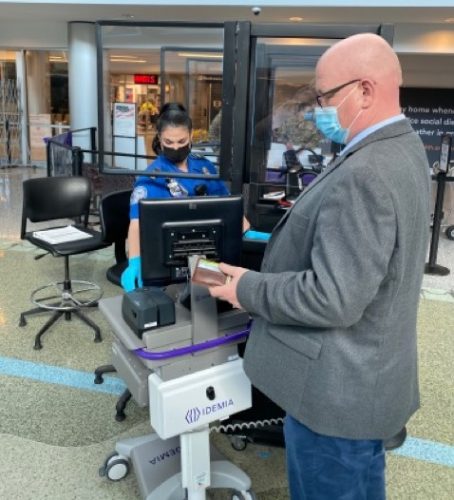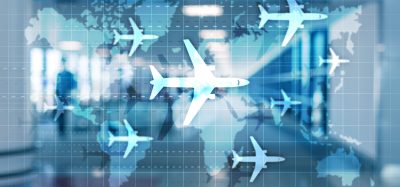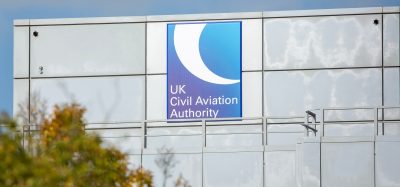TSA introduces credential authentication units at Buffalo Niagara Airport
- Like
- Digg
- Del
- Tumblr
- VKontakte
- Buffer
- Love This
- Odnoklassniki
- Meneame
- Blogger
- Amazon
- Yahoo Mail
- Gmail
- AOL
- Newsvine
- HackerNews
- Evernote
- MySpace
- Mail.ru
- Viadeo
- Line
- Comments
- Yummly
- SMS
- Viber
- Telegram
- Subscribe
- Skype
- Facebook Messenger
- Kakao
- LiveJournal
- Yammer
- Edgar
- Fintel
- Mix
- Instapaper
- Copy Link
Posted: 1 April 2021 | International Airport Review | No comments yet
By introducing the new CAT units at Buffalo Niagara Airport, TSA has been able to increase operational efficiency and limit unnecessary touchpoints.


Credit: The Transportation Security Administration – A TSA officer feeds a traveller’s ID into a credential authentication technology unit at Buffalo Niagara International Airport.
The Transportation Security Administration (TSA) checkpoint at Buffalo Niagara International Airport (BUF) is now using new technology that confirms the validity of a traveller’s identification (ID) and confirms their flight information in near real time.
“The new credential authentication technology (CAT) that we are now using at Buffalo enhances detection capabilities for identifying fraudulent IDs, such as driver’s licenses and passports, at checkpoints and increases efficiency by automatically verifying passenger identification,” said Bart R. Johnson, TSA’s Federal Security Director for Upstate New York.
Passengers should approach the travel document checking station at the checkpoint and hand their ID to the TSA officer, who will insert it into the scanner for authentication. Passengers will not have to hand over their boarding pass (electronic or paper), thus reducing a touchpoint. The CAT unit will verify that the traveller is prescreened to travel out of the airport for a flight that day; however, a boarding pass may be requested for travellers under the age of 18 and/or those with ID issues.
Even with TSA’s use of CAT units, travellers still need to check-in with their airline in advance and bring their boarding pass to their gate agent to show the airline representative before boarding their flight.
CAT units authenticate several thousand types of IDs, including passports, military common access cards, retired military ID cards, Department of Homeland Security Trusted Traveler ID cards, uniformed services ID cards, permanent resident cards, U.S. visas and driver’s licenses and photo IDs that are issued by state motor vehicle departments.
A CAT unit consists of the passport reader, an ID card reader, a Federal personal identity verification ID card reader, a monitor, a stand and a UV light.
In addition, it is critical that travellers have their REAL ID-compliant driver’s licenses or other acceptable form of identification by the 1 October 2021 deadline. The CAT units will not accept a driver’s license after the deadline if it is not REAL ID-compliant.
Passed by Congress in 2005, the REAL ID Act enacted the 9/11 Commission’s recommendation that the federal government “set standards for the issuance of sources of identification, such as driver’s licenses.” The Act and implementing regulations establishes minimum security standards for state-issued driver’s licenses and identification cards and prohibits federal agencies, like TSA, from accepting driver’s licenses and identification cards from states that do not meet these standards for official purposes, such as getting through the airport security checkpoint to board a plane.
Related topics
Airside operations, Passenger experience and seamless travel, Security, Terminal operations


















